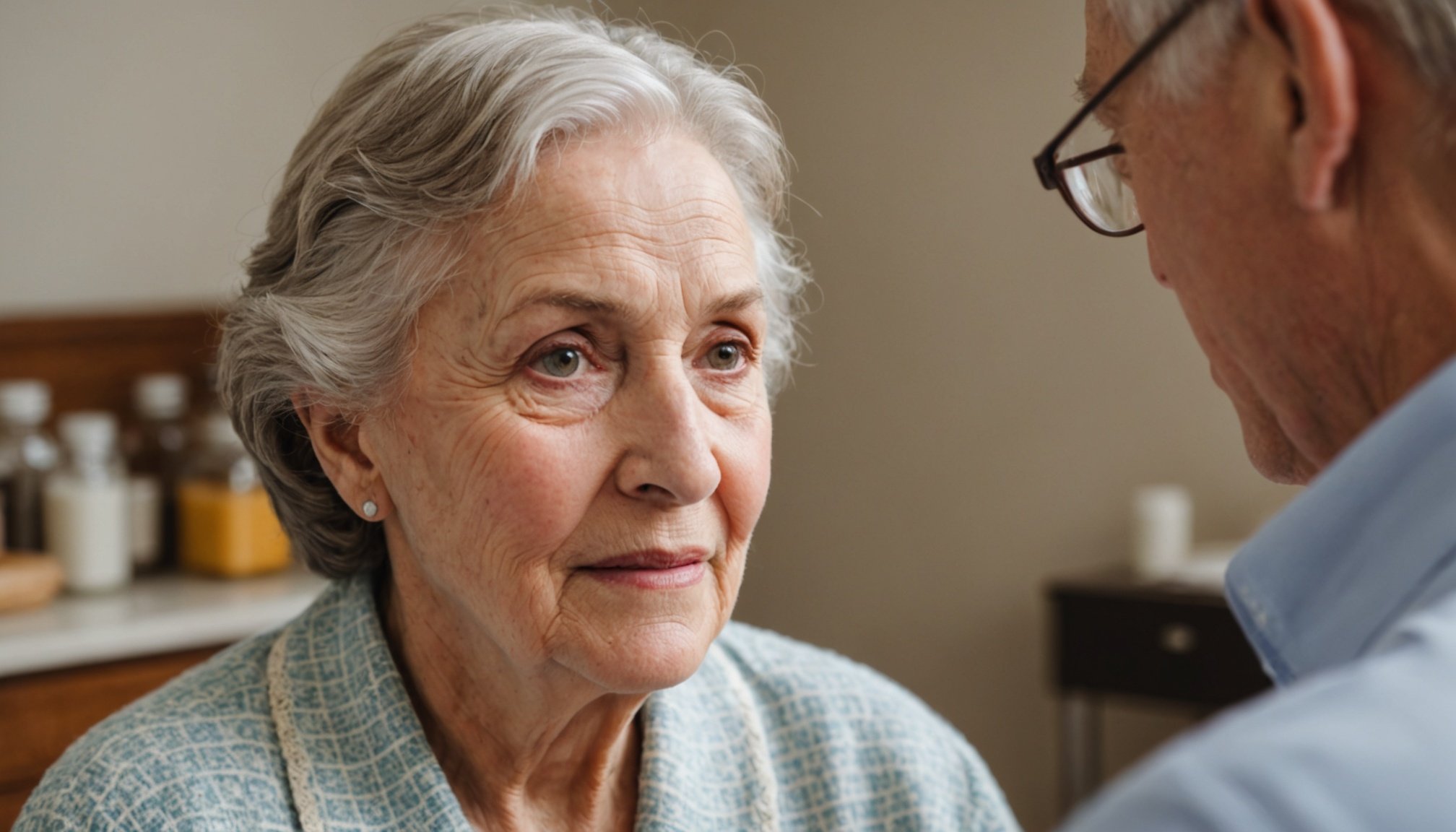Understanding Senile Pruritus
Senile pruritus is a condition seen primarily in mature skin and is a frequent issue for older adults. It refers to the chronic itchiness that occurs without the presence of an obvious rash. This condition is particularly prevalent in the elderly due to changes in elderly skin care.
Causes of Senile Pruritus in the Elderly
The causes are often multifaceted. As people age, the skin undergoes various changes like reduced moisture content, leading to elderly skin care challenges. Other factors include the decrease in oil gland activity, which results in drier skin. Moreover, medications taken for age-related health problems can contribute to this condition. Sometimes it can also be linked to underlying systemic conditions like kidney or liver disease.
In parallel : Exploring Financial Support Options for UK Seniors Seeking Home Accessibility Upgrades
Common Symptoms and Their Impact on Quality of Life
Senile pruritus manifests primarily as persistent itching. This urge to scratch can greatly diminish an individual’s quality of life, causing discomfort and even sleep disturbances. In severe cases, excessive scratching can lead to skin damage and infections. Hence, recognizing and managing these symptoms is critical for maintaining the quality of life in older adults. Understanding the unique needs of mature skin through appropriate care and treatment is an essential part of elderly skin care.
Effective Treatments for Senile Pruritus
Finding relief for senile pruritus can feel challenging, but various approaches offer solace. One prominent category is topical treatments, which include soothing ointments and creams specifically designed to ease discomfort. Moisturizing creams infused with ingredients such as ceramides or urea can help restore the skin’s barrier, thus reducing itchiness.
Also to read : Exploring the Advantages and Disadvantages of Housing Downsizing for Seniors After Retirement
When it comes to medications, antihistamines are frequently utilised. While they primarily target allergies, these medications can also lessen pruritus. Options like loratadine and cetirizine are popular choices due to their efficacy with fewer sedative effects than older antihistamines.
For those interested in more natural treatments, several home remedies might prove beneficial. A common method involves the use of oatmeal baths, which can provide a soothing effect owing to their calming properties. Another option is coconut oil, known for its moisturising effects to combat skin dryness.
Combining these approaches often yields the best results, allowing individuals to personalise their treatment plan. Consulting with healthcare providers ensures that the selected remedies or medications align with the specific needs of the individual, paving the way for a more comfortable daily life.
Lifestyle Changes to Alleviate Symptoms
Adopting specific lifestyle modifications can have a significant impact on skin health, particularly for mature skin. One crucial aspect is embracing a tailored skincare routine designed to meet the unique needs of aging skin. This includes using gentle cleansers to avoid stripping moisture and incorporating products rich in antioxidants, which combat free radicals, thereby reducing signs of aging. Adding retinol or hyaluronic acid to your routine can also boost skin elasticity and firmness.
Diet plays an equally vital role. Consuming foods rich in vitamins, such as vitamin C and E, and omega-3 fatty acids can nourish the skin from within, improving its appearance and resilience. Increasing your intake of fruits, nuts, and fish can be particularly beneficial.
Hydration is another key factor. Drinking adequate amounts of water daily not only supports overall health but also helps maintain skin moisture, which is essential for reducing dryness and improving texture. Using a humidifier at home, especially in dry climates, can also enhance skin moisture retention.
Simple lifestyle modifications like these—customized skincare, the right dietary choices, and consistent hydration—can be transformative in alleviating symptoms often associated with aging skin.
Preventive Measures
Prevention plays a crucial role in maintaining the health of elderly skin. The natural ageing process causes the skin to thin, making it more susceptible to damage and irritation. One effective way to protect the skin is by incorporating sun protection into daily routines. Sunscreens with at least SPF 30 can significantly reduce the risk of sunburn and skin cancer, which are more prevalent in older adults. Wearing a wide-brimmed hat and clothing that covers the skin further enhances protection.
Daily habits contribute significantly to elder skin care. Moisturising leads to hydrated skin, minimising dryness and flaking. Additionally, drinking sufficient water supports natural skin elasticity. Avoiding harsh soaps and taking lukewarm showers can prevent excessive drying.
Regular skin assessments are advised to identify concerns early. Checking for new spots or changes in existing marks is important. If any changes occur, especially if they include bleeding or irregular borders, seeking professional help is necessary for further evaluation.
Incorporating these practices into daily life not only ensures protection but also promotes overall skin wellness, empowering individuals to maintain healthier skin with age.
Expert Recommendations and Insights
Navigating the complexities of senile pruritus can often feel overwhelming, yet understanding specific insights from dermatologists can help in managing this condition. Dermatologists highlight the importance of a keen observation of the skin condition in elderly patients. Research studies shed light on both the internal and external factors contributing to pruritus, like medication side effects which need careful attention.
Recent research studies reveal the effectiveness of moisturisers with ceramides, emphasising the need for consistent skin care routines. This is particularly evident in the elderly, where skin barrier restoration is pivotal. Expert opinions concur that the optimal pH level of skin products can reduce itching significantly.
Dermatology advice recommends specialised creams focusing on soothing ingredients like aloe vera and oatmeal. They are reputed for their anti-inflammatory properties, which can bring noticeable relief. When involving caregivers in management, recommendations suggest implementing a standard skin-check routine. Monitoring changes can lead to timely interventions and expert opinions affirm that these strategies are effective.
Ultimately, cooperation between dermatologists and caregivers forms the cornerstone of effective management. This collaboration coupled with recent insights ensures a higher degree of comfort and care for the elderly dealing with senile pruritus.
Potential Side Effects and Considerations
When contemplating different treatment options, it’s crucial to be aware of potential side effects. Commonly, both topical and oral treatments can provoke side effects such as redness, irritation, or gastrointestinal issues. These manifestations can vary based on individual reactions and the specific treatment used.
For elderly patients, especially those managing multiple health conditions, treatment choices require cautious consideration. Their bodies may process medications differently, and interactions with other treatments can amplify side effects. Therefore, navigating these complexities safely is vital.
Safety becomes more intricate in such scenarios, highlighting the importance of consulting a healthcare provider. A medical professional can offer guidance tailored to individual health profiles, ensuring that any treatment modifications prioritize the patient’s overall well-being.
While these factors might seem daunting, understanding them empowers patients and caregivers to make informed decisions. Keeping an open dialogue with healthcare professionals and monitoring any changes in side effects can facilitate adjustments to achieve the safest and most effective treatment outcomes. Always prioritizing communication and expert guidance enhances the treatment journey, optimising health outcomes efficiently and safely.











